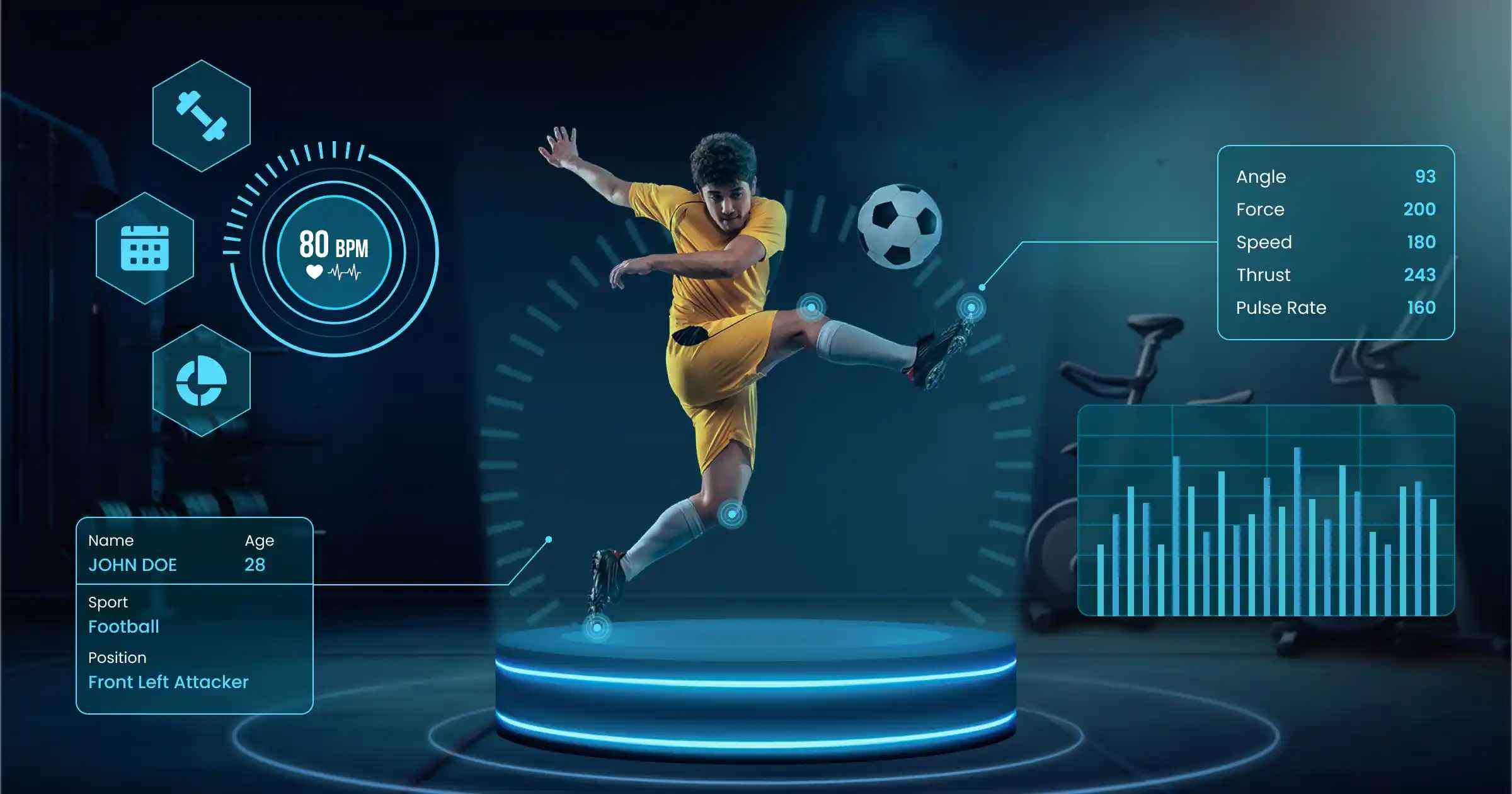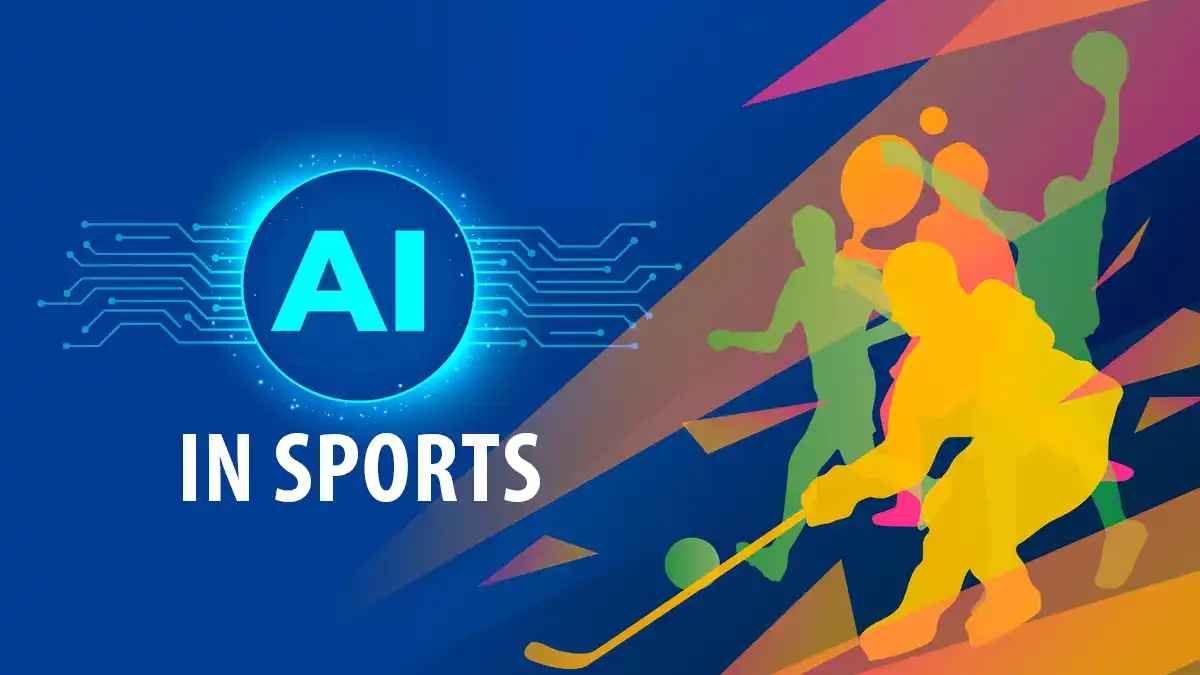AI in Sports: Impactful Applications and Real-World Use Cases
Updated on : 04 March, 2025

Image Source: facebook.com
Table Of Contents
- 1. What is AI in Sports?
- 2. How is AI Being Used in Sports Analytics Today?
- 3. Data-Driven Game Analytics
- 4. Factors Driving the Sports AI Market Growth
- 5. Applications of AI in Sports
- 6. How is AI Building Fan Engagement?
- 7. How Do Wearable AI Devices Work?
- 8. Impact of AI on Sports and Equipment
- 9. Benefits of AI in Sports
- 10. Diverse Use Cases of AI in Sports
- 11. Challenges of Using AI in Sports
- 12. Future of AI in Sports
- 13. FAQs
Table Of Contents
AI in Sports: Revolutionizing the Game
Artificial Intelligence (AI) is reshaping the sports industry, offering innovative solutions for athletes, coaches, fans, and organizations. From enhancing performance to engaging fans, AI is transforming how we experience and analyze sports. Let’s explore its impact through various dimensions.
The AI in sports market is projected to reach $29.7 billion by 2032, growing at a 30.1% CAGR. The investment is driven by increasing demand for AI applications in player performance analysis, injury prevention, fan engagement, and game strategy optimization
What is AI in Sports?

Image Source: google.com
AI in sports refers to the application of machine learning, data analytics, and predictive modeling to improve player performance, optimize strategies, enhance fan engagement, and streamline operations. By leveraging real-time data and advanced algorithms, AI creates opportunities for smarter decision-making both on and off the field.
How is AI Being Used in Sports Analytics Today?
AI-driven analytics are central to modern sports. Teams analyze massive datasets to gain insights into player performance, opponent tendencies, and game strategies. These insights help coaches make informed decisions and improve outcomes.

AI is revolutionizing sports with immersive AR/VR experiences!
Data-Driven Game Analytics
AI processes game footage and player statistics to extract actionable insights:
Video Analysis:
- AI analyzes game footage to detect key moments like goals, fouls, and assists.
- It assesses player positioning, ball movement, and tactics, helping coaches refine strategies.
- AI also automates highlight generation for broadcasters and fans.
Opponent Analysis:
- AI studies rival teams’ past games to identify patterns, formations, and weaknesses.
- Machine learning predicts their strategies, helping teams prepare game plans and exploit opportunities.
- AI simulations also allow players to practice against predicted opponent behaviors.
Real-Time Decision Support:
- AI provides live tactical recommendations based on real-time data.
- It suggests substitutions, formation changes, and strategic adjustments, considering player fatigue, performance, and opponent tactics.
- AI wearables also offer instant feedback for better in-game decisions.
For the AI-ML Development Services.
Factors Driving the Sports AI Market Growth
The sports AI market is projected to grow significantly due to:
- Increasing adoption of wearable devices.
- Demand for personalized fan experiences.
- Advancements in predictive analytics and computer vision.
- Rising investment in sports technology.
Applications of AI in Sports

Image Source: google.com
AI applications span across multiple areas:
| AI Application | Benefit | Example |
|---|---|---|
| Player Performance | Tracks biometrics like heart rate, speed, and endurance to optimize training and prevent overtraining. | AI-powered wearables, fitness trackers |
| Injury Prevention | Predicts injury risks by analyzing movement patterns, fatigue, and strain. | Motion tracking, predictive analytics |
| Game Strategy | Studies opponents' tactics and player performance to refine strategies and formations. | AI-driven match analysis, tactical simulations |
| Fan Engagement | Enhances experiences with personalized content, match predictions, AR/VR, and chatbots. | AI-powered fan apps, immersive VR experiences |
| Equipment Innovation | Uses smart sensors to track movement, impact, and performance for improved safety. | Smart helmets, AI-enhanced sports gear |

Looking to integrate AI/ML solutions for your fitness business?
How is AI Building Fan Engagement?
AI transforms fan experiences by:
- Personalized Content: AI tailors sports content based on user preferences, delivering customized highlights, news, and game recommendations.
- Enhanced Broadcasts: AI-powered AR overlays provide real-time stats, player insights, and tactical breakdowns for interactive viewing.
- Immersive Experiences: AI-driven VR offers 360° replays, virtual seats, and interactive fan zones for a stadium-like experience. For the AR-VR Development Services.
How Do Wearable AI Devices Work?
Wearable devices equipped with AI collect real-time data on metrics like heart rate, stress levels, and movement patterns. This data is analyzed to:
| Feature | Function | Impact |
|---|---|---|
| Heart rate tracking | Monitors player endurance | Prevents overtraining |
| Motion sensors | Tracks movement patterns | Improves technique |
Optimize Training:
- AI analyzes biometrics like heart rate, endurance, and movement efficiency to customize workouts, improve stamina, and maximize athletic performance.
Prevent Injuries:
- Detects fatigue, muscle strain, and improper movement patterns, alerting athletes and coaches to take preventive action before injuries occur.
Provide Live Feedback:
- Uses motion tracking and AI analytics to offer instant feedback on technique, positioning, and performance, helping athletes make real-time adjustments.
Impact of AI on Sports and Equipment
AI has revolutionized sports equipment by integrating smart sensors that:
- Track Performance Metrics: AI monitors speed, endurance, and movement efficiency for optimized training.
- Enhance Safety Features: Smart helmets and gear with impact sensors detect and prevent potential injuries.(e.g., helmets with impact sensors).
- Optimize Equipment Design: Biomechanical analysis improves gear ergonomics, comfort, and performance efficiency.
Benefits of AI in Sports
The advantages of AI include:
-
Boosted Athlete Performance:
- AI tracks biometrics like heart rate, speed, and movement patterns, helping athletes refine techniques, enhance endurance, and maximize training efficiency.
-
Injury Prevention:
- AI-powered predictive analytics detect fatigue, muscle strain, and improper movements, allowing for early interventions to reduce injury risks and improve recovery plans.
-
Enhanced Fan Engagement:
- AI personalizes fan experiences by recommending tailored content, generating match predictions, and offering immersive AR/VR interactions, real-time updates, and chatbot assistance.
-
Smarter Team Strategies:
- AI analyzes player performance, opponent tactics, and in-game data, providing real-time analytics to help coaches make informed decisions, optimize formations, and improve team performance.
Diverse Use Cases of AI in Sports
Some notable examples include:
| Sport | AI Use Case | Technology Used |
|---|---|---|
| Football | Tactical planning | Match data analysis |
| Tennis | Motion tracking | AI-driven sensors |
| Swimming | Performance analysis | Computer vision |
Challenges of Using AI in Sports

Image Source: google.com
Despite its benefits, challenges remain:
- High costs of implementation.
- Data privacy concerns for athletes and fans.
- Resistance to adopting new technologies among traditionalists.
Future of AI in Sports
The future holds exciting possibilities:
- Advanced virtual reality for training simulations.
- Fully automated referee systems for unbiased decisions.
- Greater integration of AI in eSports and fantasy leagues.
FAQs
Q.1. AI in Player Performance Enhancement
A: AI analyzes player data, tracks fitness levels, and optimizes training plans using wearables and video analysis.
Q.2. AI in Game Strategy Refinement
A: AI studies opponent tactics, predicts game scenarios, and helps coaches develop winning strategies.
Q.3. AI in Fan Engagement
A: AI personalizes content, provides real-time stats, enhances virtual experiences, and powers chatbots for fan interaction.
Q.4. AI in Officiating Accuracy
A: AI-powered systems like VAR and Hawk-Eye improve decision-making, reduce errors, and ensure fair play.
Q.5. AI in Athlete Training & Development
A: AI wearables track performance, prevent injuries, and VR simulations improve skills and decision-making.


